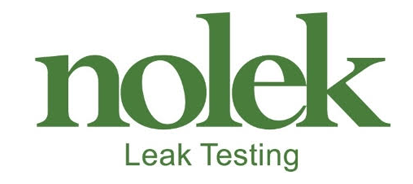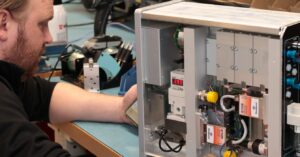Leak test failures can be frustrating. You’ve got parts to ship, auditors to satisfy, and operators waiting for answers, yet your test results are inconsistent, unpredictable, or just plain wrong. This guide walks you through the four most common causes of leak test failures and how to solve them. Use it as a reference on the shop floor or during your next QA troubleshooting session.
- Poor Fixturing and Clamping
The Symptom:
- Inconsistent results from the same batch
- False failures on “good” parts
- Leaks appearing at the fixture, not the product
The Cause:
Fixtures that don’t provide a repeatable seal allow test gas to escape around the product. Worn O-rings or uneven clamping pressure create false positives.
The Fix:
- Inspect and replace worn seals regularly
- Upgrade to guided, repeatable fixturing designs
- Consider automated clamping for high-sensitivity applications
How Nolek Helps:
Our engineering team designs robust, quick-change fixtures that minimise variability and reduce operator dependency.
- Unstable Ambient Conditions
The Symptom:
- Test results fluctuate between shifts or across sites
- Failures linked to temperature or pressure changes in the environment
The Cause:
Leak testing is sensitive to environmental drift. Variations in room temperature, barometric pressure, or humidity can distort test results.
The Fix:
- Stabilise test environments with controlled temperature and airflow
- Use test systems with automatic compensation for ambient conditions
- Shorten hose lengths to reduce the effect of thermal expansion
How Nolek Helps:
Our systems are designed with environmental stability in mind, including built-in compensation features that reduce drift and false failures.
- Residual Gas Interference
The Symptom:
- Random false positives after helium testing
- Chamber “contamination” that affects subsequent runs
The Cause:
Residual tracer gas from previous tests remains trapped in fixtures, hoses, or porous materials. Over time, this contaminates test results.
The Fix:
- Optimise purge cycles between tests
- Select low-absorption fixture materials
- Review chamber design to eliminate dead zones
How Nolek Helps:
Our engineers configure systems with optimised venting and recommend materials that prevent gas absorption, keeping your results clean and reliable.
- Calibration Drift
The Symptom:
- Test performance degrades gradually over time
- Different stations or shifts produce different results
The Cause:
Sensors and measuring components naturally drift out of calibration. Without regular checks, results lose accuracy and repeatability.
The Fix:
- Schedule annual calibrations traceable to international standards
- Perform interim checks with calibrated leak standards
- Keep validation documentation audit-ready
How Nolek Helps:
We offer preventive service contracts with annual calibration, IQ/OQ/PQ support, and spare part planning, ensuring consistent, validated performance.
Wrapping Up
Most leak test failures don’t come from the product; they come from the process. By addressing fixturing, environment, residual gas, and calibration, you can eliminate the guesswork and restore confidence in your results.
With Nolek as your partner, troubleshooting doesn’t just fix today’s problem; it strengthens your entire test line for tomorrow.





